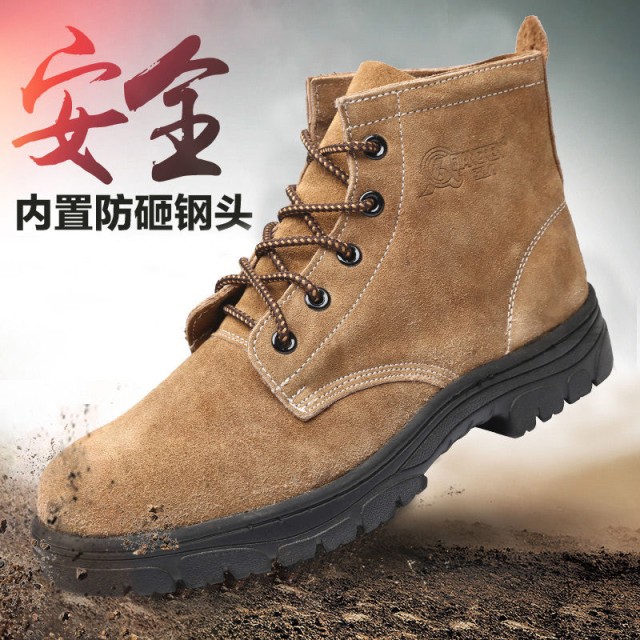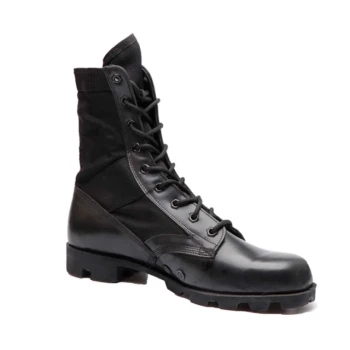Selecting the right work boots isn’t just about comfort—it’s about preventing acute injuries and long-term musculoskeletal damage. Whether you’re navigating slippery surfaces, climbing ladders, or standing for 12-hour shifts, the wrong footwear can amplify job hazards. This guide breaks down boot selection by surface conditions, movement demands, and safety certifications, backed by industrial research.
Work Boot Selection for High-Risk Environments
How Surface Conditions Dictate Sole Design and Traction Patterns
Uneven terrain, oil slicks, or wet floors require outsoles engineered for grip. Research shows that:
- Lug patterns (deep, multi-directional treads) reduce slip risks on loose gravel or mud by over 40% compared to flat soles.
- Oil-resistant rubber maintains traction in industrial settings, while softer compounds adapt to urban concrete.
For electrical work, non-conductive soles (rated EH) prevent static discharge.
Boot Features for Dynamic Movements: Ladder Climbing vs. Truck Access
Jobs demanding frequent climbing or pivoting need boots that support natural motion:
- Flex grooves in the forefoot ease ladder rung gripping.
- Shank reinforcement (steel or composite) stabilizes arches during lateral truck steps.
- Ankle collars with padding prevent abrasion during squatting.
Did you know? Boots with rigid shanks can reduce foot fatigue by redistributing pressure during climbs.
Engineering Comfort for Repetitive Tasks
ASTM F2413 Ratings Explained: Impact Protection and Compression Resistance
Safety toes (steel, alloy, or composite) meet ASTM standards for:
- Impact resistance (75 ft-lbs force): Shields toes from falling objects.
- Compression resistance (2,500 lbs): Protects against rolling loads.
Composite toes are lighter for all-day wear but lack the durability of steel in extreme conditions.
Anti-Fatigue Midsole Technologies for 12-Hour Shifts on Hard Floors
Extended standing strains joints, but advanced midsoles combat this:
- Polyurethane foam absorbs 30% more shock than standard EVA.
- Contoured footbeds align posture, reducing lower back pain.
- Breathable linings minimize sweat buildup, a common cause of blisters.
Pro tip: Rotate two pairs of boots to extend midsole recovery time between wears.
Put Safety First with 3515’s Work Boot Solutions
3515 designs boots tailored to your job hazards—from oil-resistant soles for warehouse workers to EH-rated designs for electricians. As a trusted manufacturer for distributors and bulk buyers, we combine ASTM-certified protection with ergonomic engineering.
Ready to equip your team with injury-preventing footwear? Contact 3515 to discuss custom solutions for your workforce.
Related Products
- Wholesale Customizable Suede Safety Boots - Puncture-Proof with Velcro Closure
- Puncture-Resistant Velcro Safety Boots for Wholesale & Custom Manufacturing
- Customizable Anti-Smash Safety Boots for Wholesale & Private Label Manufacturing
- Athletic Safety Shoes with Dial Closure & Steel Toe for Wholesale & Custom Manufacturing
- Wholesale Mesh Steel Toe Safety Shoes with Dial Closure Factory Production
Related Articles
- How to Choose Work Boots That Match Your Job's Safety Demands
- How to Extend Work Boot Lifespan: Science-Backed Care for Safety & Savings
- How to Choose Work Boots That Match Your Industry's Safety Needs
- Work Boots vs. Western Boots: How to Choose the Right Footwear for Labor Safety
- Matching Men’s Work Shoe Safety Technologies to Workplace Hazards



















